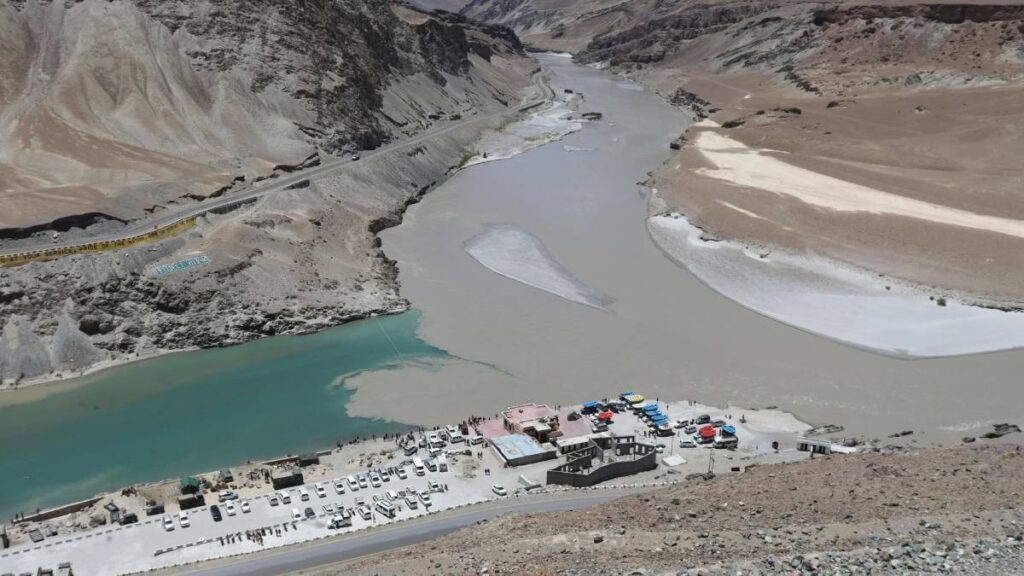India’s Indus Treaty Suspension Plunges Pakistan into Deepening Water Crisis
4 min read
Background: A Treaty Under Strain
The Indus Waters Treaty, signed in 1960 with World Bank mediation, has long governed the sharing of six rivers between India and Pakistan. The treaty allocates the eastern rivers, Ravi, Beas, and Sutlej, to India, while the western rivers, Indus, Jhelum, and Chenab, are designated for Pakistan’s use. Despite decades of tensions, the IWT has been a rare example of bilateral cooperation, surviving multiple conflicts.
However, the treaty came under severe strain following the April 22, 2025, Pahalgam massacre, where 26 people, mostly tourists, were killed by terrorists allegedly backed by Islamabad. In retaliation, India suspended the IWT, halting data sharing and reducing water flows to Pakistan. Prime Minister Narendra Modi, addressing the nation last month, stated, “Blood and water cannot flow together,” signaling India’s firm stance.
The Crisis Unfolds: Key Developments
Pakistan’s water woes have intensified in recent weeks, with the country’s two largest reservoirs, Tarbela on the Indus and Mangla on the Jhelum, reaching “dead storage” levels. This critical threshold means water can no longer be released by gravity, severely limiting its use for irrigation and drinking. The Pakistan Indus River System Authority (IRSA) reported on June 11, 2025, that the country discharged 11,180 cusecs more water than it received, further depleting reserves.
Agricultural Devastation
The crisis has hit Pakistan’s agricultural sector hardest, particularly in Punjab, where the kharif cropping season (May to September) is underway. Water availability for irrigation has dropped significantly, with Punjab receiving 1.14 lakh cusecs of water daily compared to 1.43 lakh cusecs last year, a 20% decline. This shortfall has led to a sharp reduction in crop yields:
- Kharif Crops: Cotton production has plummeted by over 30%, while maize output has fallen by 15%.
- Rabi Crops: Wheat, a staple crop sown in the winter season, has seen a 9% drop in production due to lingering water shortages.
- Economic Impact: Agriculture, which accounts for nearly a quarter of Pakistan’s GDP, saw its share dip to 23.54% in fiscal year 2025, down from 24.03% the previous year.
Looming Shortages
With the monsoon season still weeks away, IRSA has warned of a 21% water shortage in the early kharif season (May 1–June 10) and a 7% deficit in the late kharif season (June 11–September 30). India’s ongoing desilting and flushing of dams in Jammu and Kashmir, aimed at boosting its own storage capacity, is expected to further reduce water flows to Pakistan, exacerbating the crisis.
Pakistan’s Response: Diplomatic Efforts Fall Flat
Desperate to mitigate the crisis, Pakistan has made repeated attempts to restore the IWT. Since April, Islamabad has sent four letters to New Delhi, urging India to reconsider its decision. Additionally, Pakistan sought intervention from the World Bank, the treaty’s original broker, but the institution declined to mediate, citing the political nature of the dispute.
Sources indicate that Pakistan’s pleas have been met with silence from India, which is doubling down on its water infrastructure projects. New canal initiatives, including plans to connect the Beas to the Ganga and the Indus to the Yamuna, aim to enhance India’s domestic water security and strategic control over shared rivers.
Why This Matters: A Humanitarian and Economic Concern
For Pakistan, the water crisis is more than a diplomatic setback, it’s a humanitarian and economic catastrophe in the making. Punjab and Sindh, the country’s agricultural powerhouses, rely heavily on the Indus and its tributaries. With reservoirs at dead levels and irrigation canals running dry, farmers face unprecedented challenges, threatening food security and livelihoods.
The crisis also underscores the fragility of transboundary water agreements in times of geopolitical conflict. As climate change intensifies water scarcity across South Asia, the suspension of the IWT could set a precedent for future disputes over shared resources.
What Lies Ahead?
Without a resolution, Pakistan’s water crisis is poised to worsen. The absence of water flow data from India, a key component of the IWT, has left IRSA struggling to regulate water distribution. While monsoon rains expected in July may provide temporary relief, long-term water management remains uncertain.
India, meanwhile, continues to strengthen its water infrastructure, signaling a shift toward greater self-reliance. However, this move has raised concerns among international observers about the potential for escalation in India-Pakistan relations.
Conclusion
The suspension of the Indus Waters Treaty has pushed Pakistan into uncharted territory, with its agricultural sector and water security hanging in the balance. As diplomatic efforts falter and water levels dwindle, the crisis serves as a stark reminder of the interconnectedness of water, politics, and survival in South Asia. For now, Pakistan’s farmers and policymakers can only brace for the challenges ahead, while the region watches closely for any signs of de-escalation.





